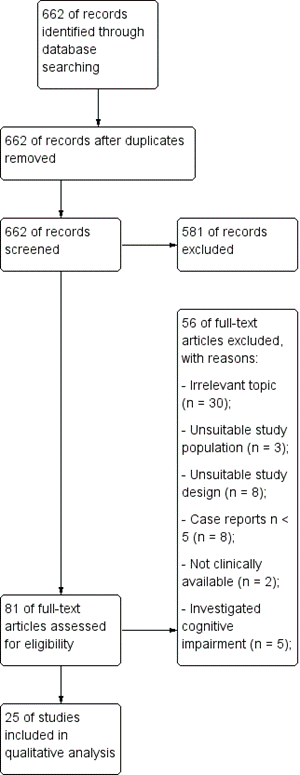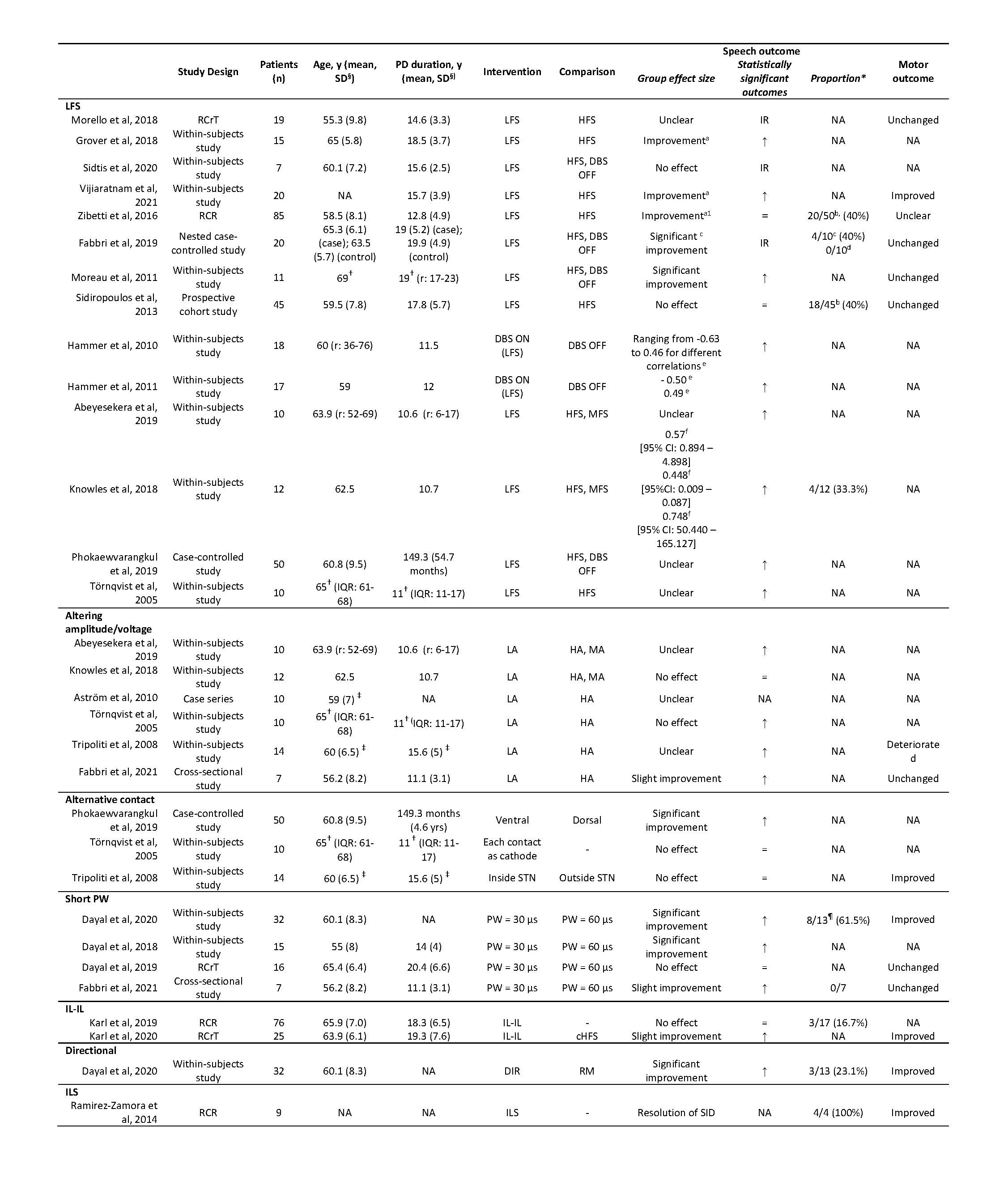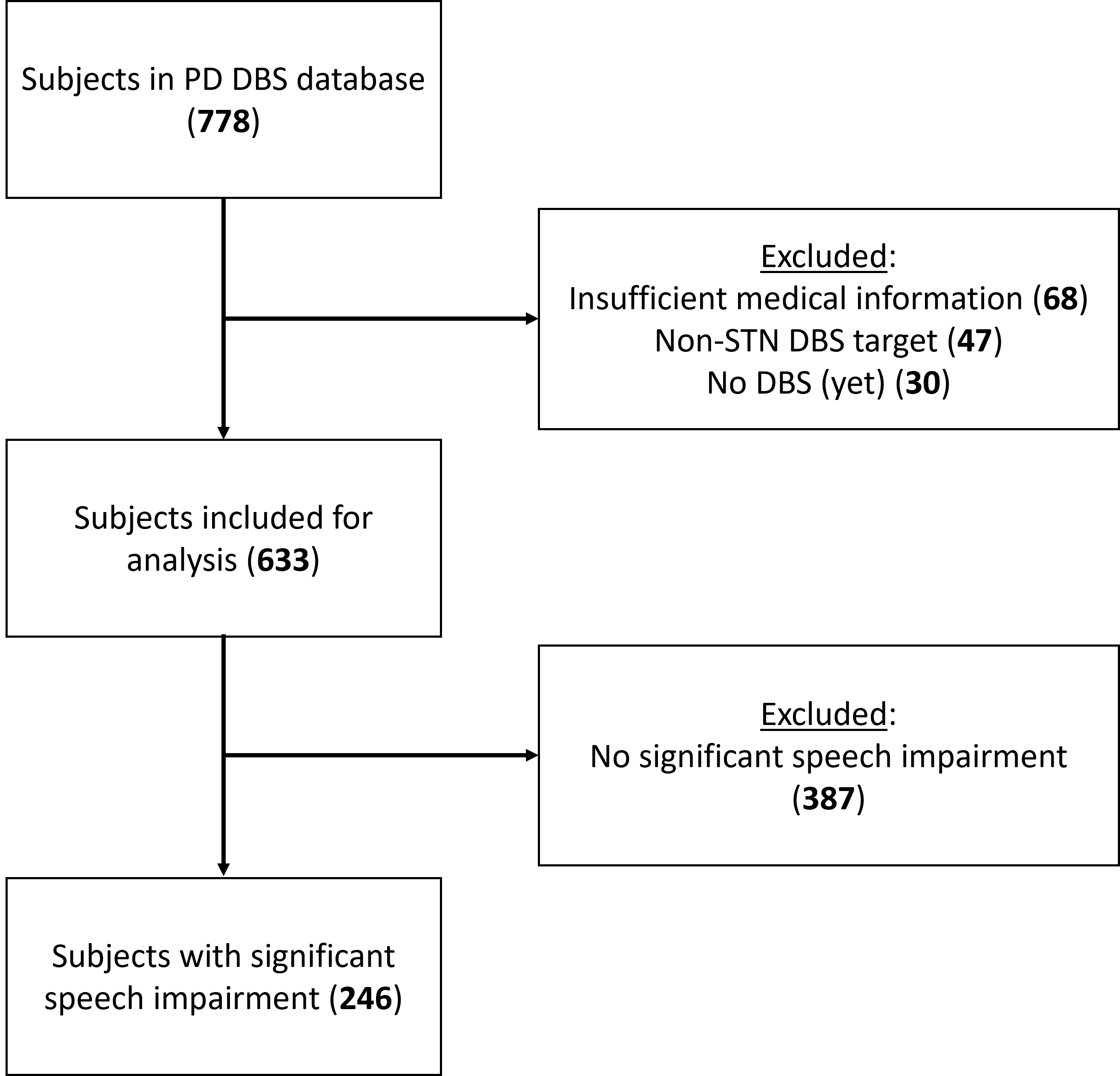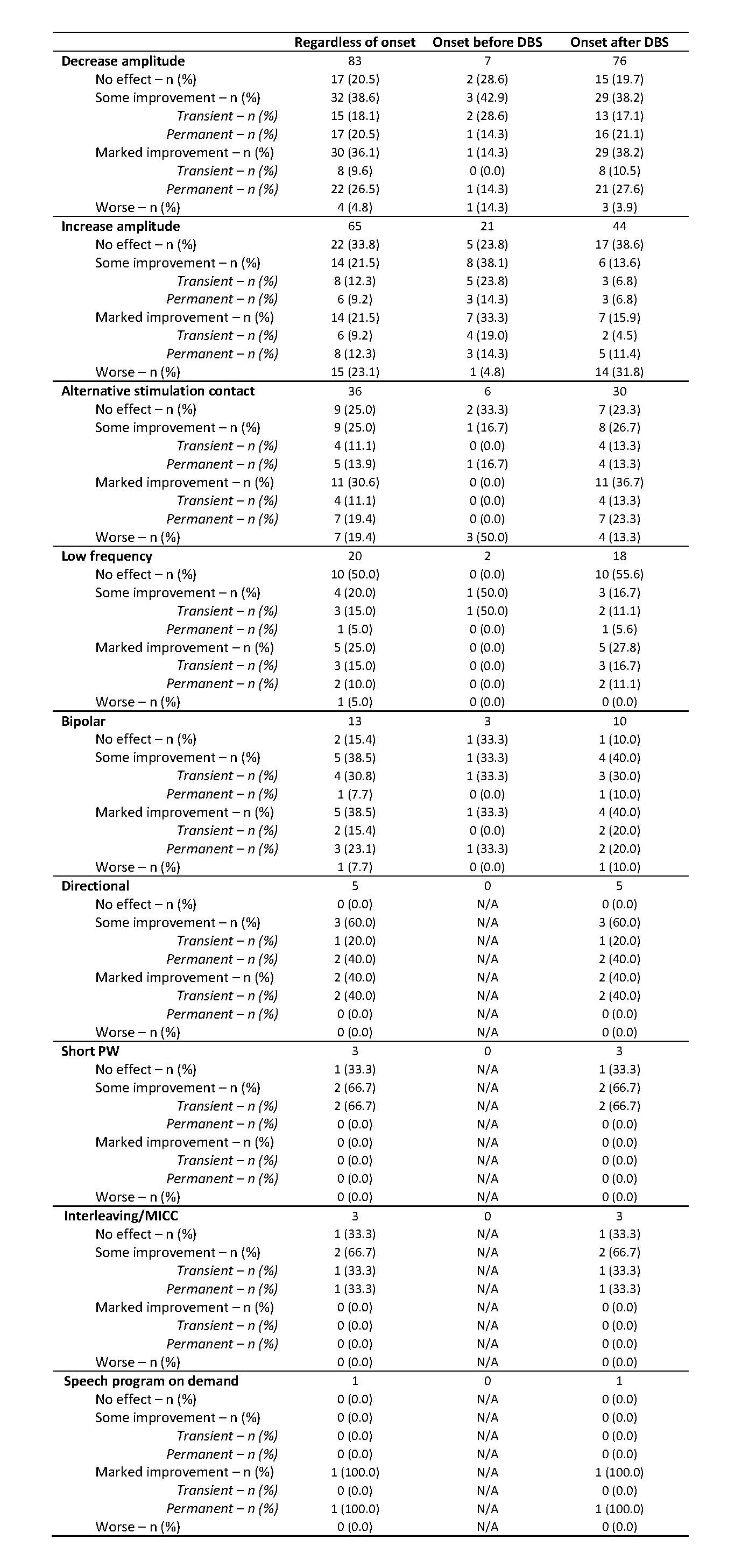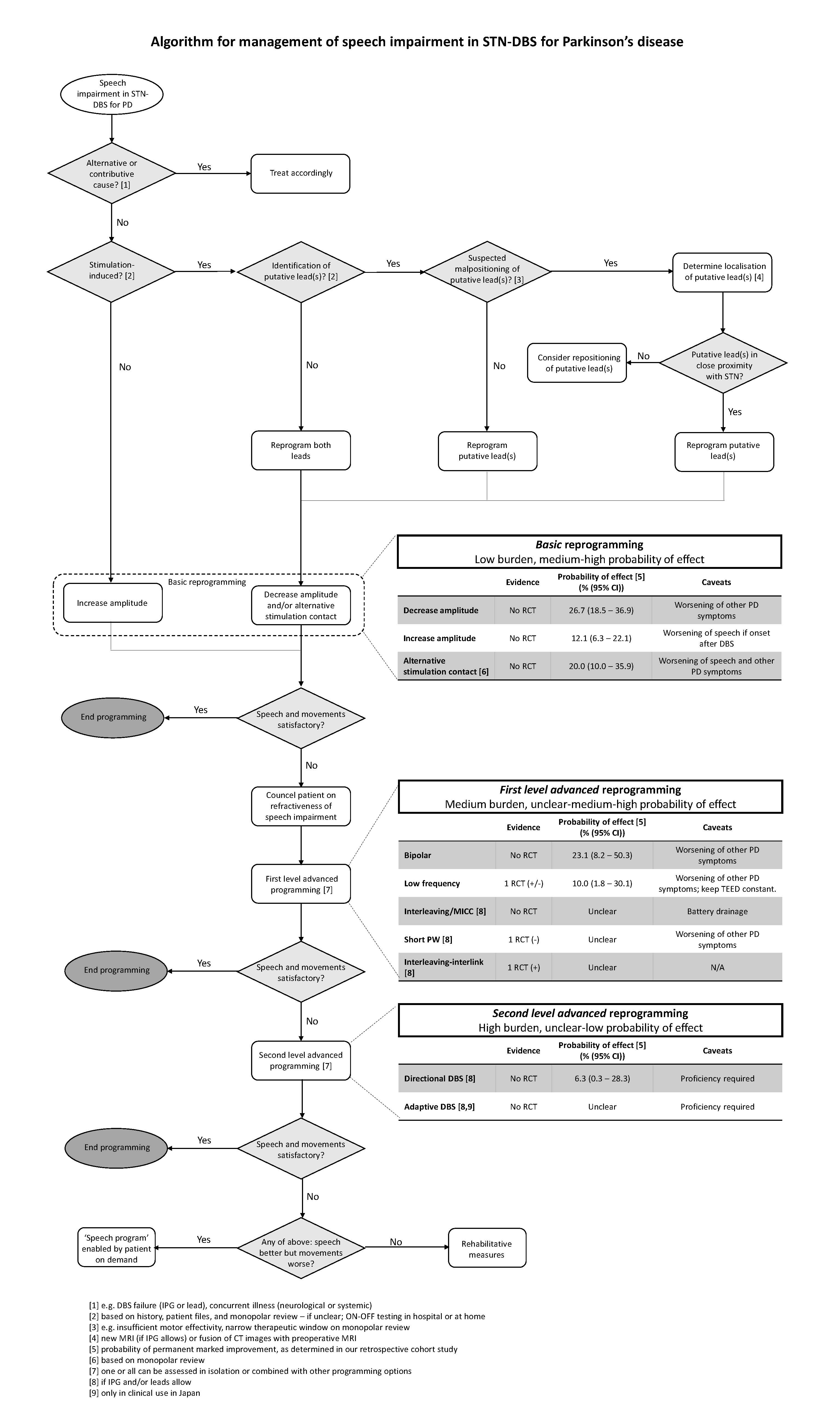Category: Surgical Therapy: Parkinson's Disease
Objective: To establish an evidence- and experience-based algorithm for the management of speech impairment (SI) in Parkinson’s disease (PD) patients treated with STN-DBS.
Background: STN-DBS has an ambiguous relation to SI: SI can be both a stimulation-induced side effect and can improve with STN-DBS. Several DBS programming options have been suggested and evaluated to improve SI in STN-DBS, but direct comparisons and clinical validation are missing. With the recent advent of more advanced programming options and growing complexity, there is a need for an overarching algorithm for the management of SI in STN-DBS for PD.
Method: We performed a systematic literature review to identify studies that aimed to improve SI after STN-DBS. For each study, treatment response probability and effect size were estimated. We also performed a single-centre (Amsterdam UMC, The Netherlands) retrospective study to identify patients with SI after STN-DBS. In case of parameter change for SI the magnitude and duration of effect were collected. Data regarding onset of SI, potential lead misplacement, and assessment of DBS-induced nature of SI were also collected.
Results: Twenty-five of 662 identified studies were included in the qualitative analysis [Figure 1]. Randomized controlled trials have only rarely been performed [Table 1]. The measures and actual outcomes were heterogenous, precluding conduction of a meta-analysis or determination of response probabilities and effect sizes. In the retrospective study, 246 of 633 patients with STN-DBS were identified as experiencing significant SI [Figure 2]. Probability of sustained marked SI improvement was generally low, with decreasing amplitude (26.5 %), bipolar stimulation (23.1 %) and changing stimulation contact (19.4 %) exhibiting the highest probabilities [Table 2]. In patients with SI onset after DBS, increasing the amplitude often (31.8 %) worsened SI. Based on probability of effect, burden for the patient, and programming complexity, we propose an algorithm to address SI in STN-DBS [Figure 3].
Conclusion: Due to the heterogeneous origin of SI, methodological heterogeneity of studies, and lack of studies with comparative design, management of SI in PD patients with STN-DBS remains challenging. We propose a systematic approach following an literature- and experience-based algorithm, including counselling patients regarding refractiveness.
To cite this abstract in AMA style:
B. Swinnen, V. Lotfalla, J. Dijk, V. Odekerken, R. Schuurman, R. de Bie, M. Beudel. Programming algorithm for the management of speech impairment in STN-DBS for Parkinson’s disease [abstract]. Mov Disord. 2022; 37 (suppl 2). https://www.mdsabstracts.org/abstract/programming-algorithm-for-the-management-of-speech-impairment-in-stn-dbs-for-parkinsons-disease/. Accessed December 23, 2025.« Back to 2022 International Congress
MDS Abstracts - https://www.mdsabstracts.org/abstract/programming-algorithm-for-the-management-of-speech-impairment-in-stn-dbs-for-parkinsons-disease/

